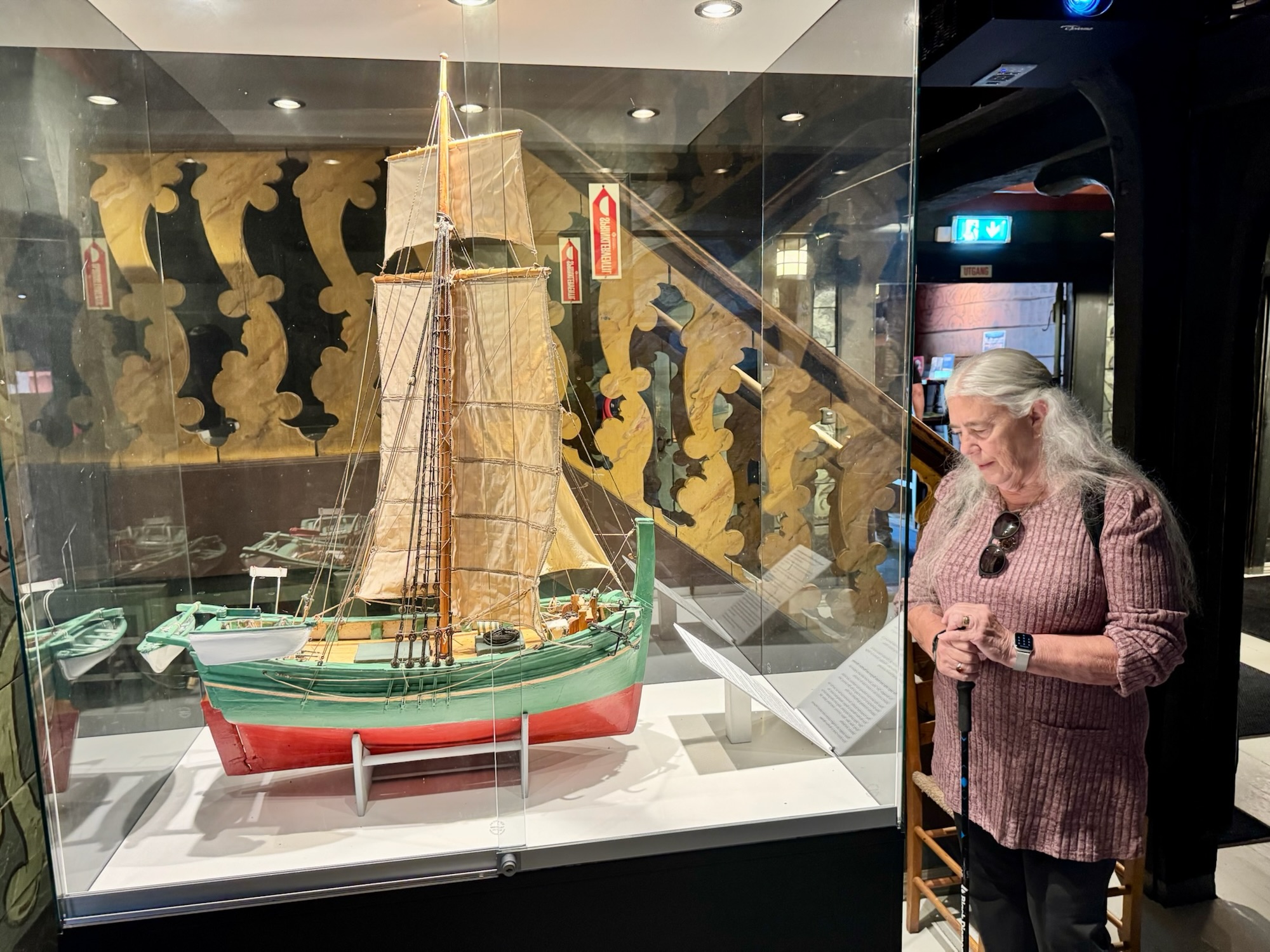
Bergen is not short on museums. We counted 29 in the hotel guidebook. I suspect a few may have been left out.
They are as diverse as one dedicated to fire fighting over the years (Bergen has survived 39 known major conflagrations between the year 1000 and the last major one which occurred in 1702), and another museum located in the former Leprosy hospital.
I really wanted to see the one about leprosy, but it was closed due to illness. (It’s really closed for renovation.)
We chose three that were within an easy walking distance of our hotel. Bergen’s town center is such that almost everything is within easy walking distance.
The first of these we visited on Sunday, just a few minutes walk from our hotel.
The Hanseatic Museum and Schotstuene consists of a group of restored buildings that date to 1703, a year after the last great fire to ravage Bryggen. It is a UNESCO World Heritage Site.

In an effort to combine resources and defend against pirates, 12th century German merchants formed a trading guild, The Hanseatic League. Bergen was one of its principal cities.

The league flourished to include over 200 major cities and dominated trade in the Baltic, Scandinavia and Northern Europe for hundreds of years. Merchant ships traveled in convoy with an exchange of goods that covered the whole of Europe, northern Africa, and even extended along the Silk Road to the east and North America to the west.

Bryggen (Bergen) controlled access to the entire 60,000 mile coastline of Norway.
The League reached its zenith in the 16th and early 17th centuries. Its influence continued even into the 19th century.
Hanseatic vessels grew in size.


By the mid 1500s League ships were among the largest in the world, some measuring over 250 feet in length and able to transport over 500 tons of cargo.











Today (Monday) we visited the Bergen Archeological Museum. I am including some images of artifacts that date to and before the Hanseatic period.










Our visit to two other museums/exhibitions will be featured in the next post.
Liz says:
Your pictures and comments make me want to put Bergen on my bucket list. I love museums! Looking forward to tomorrow’s post. Stay groovy my friend.
Pete Schloss says:
Will do!